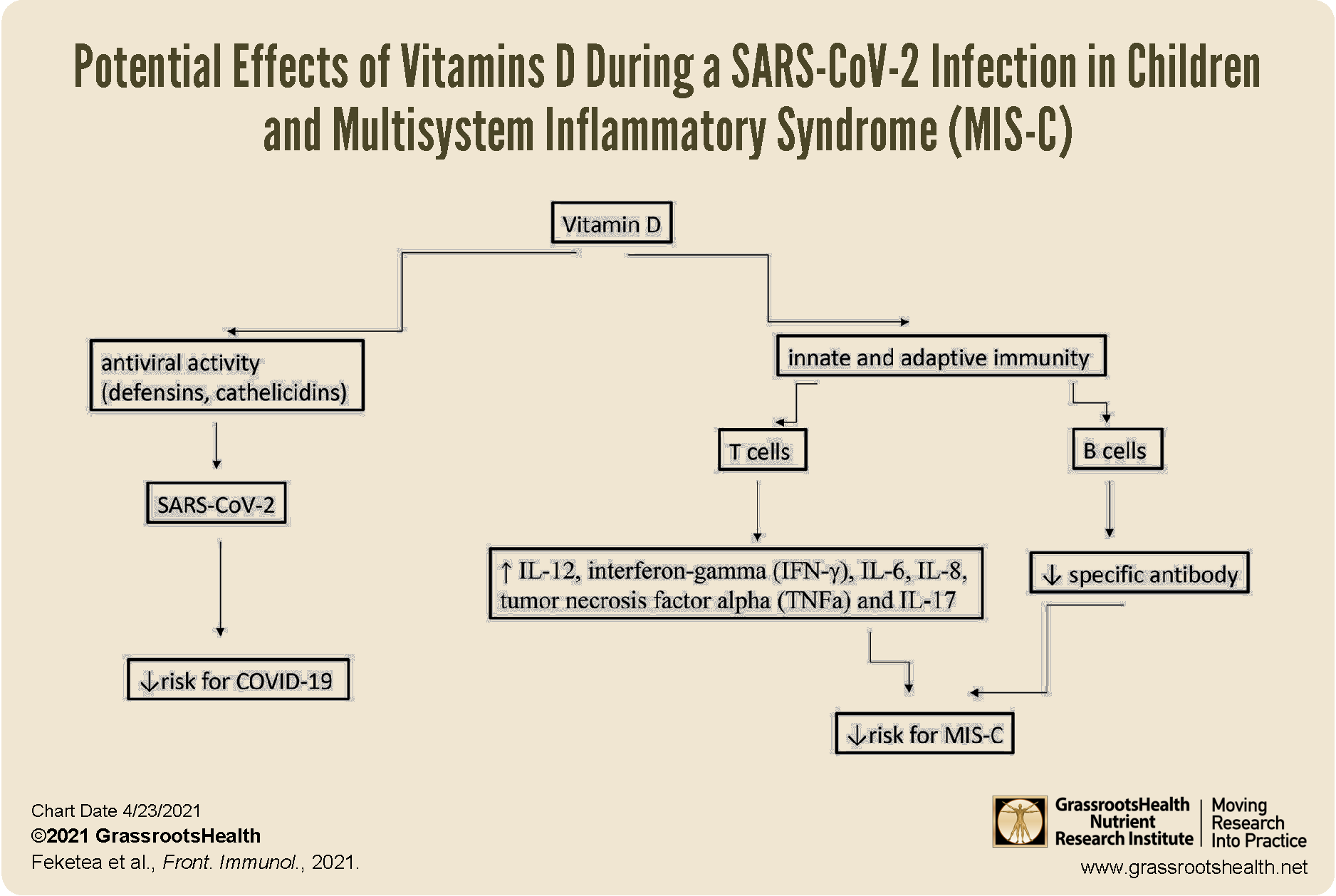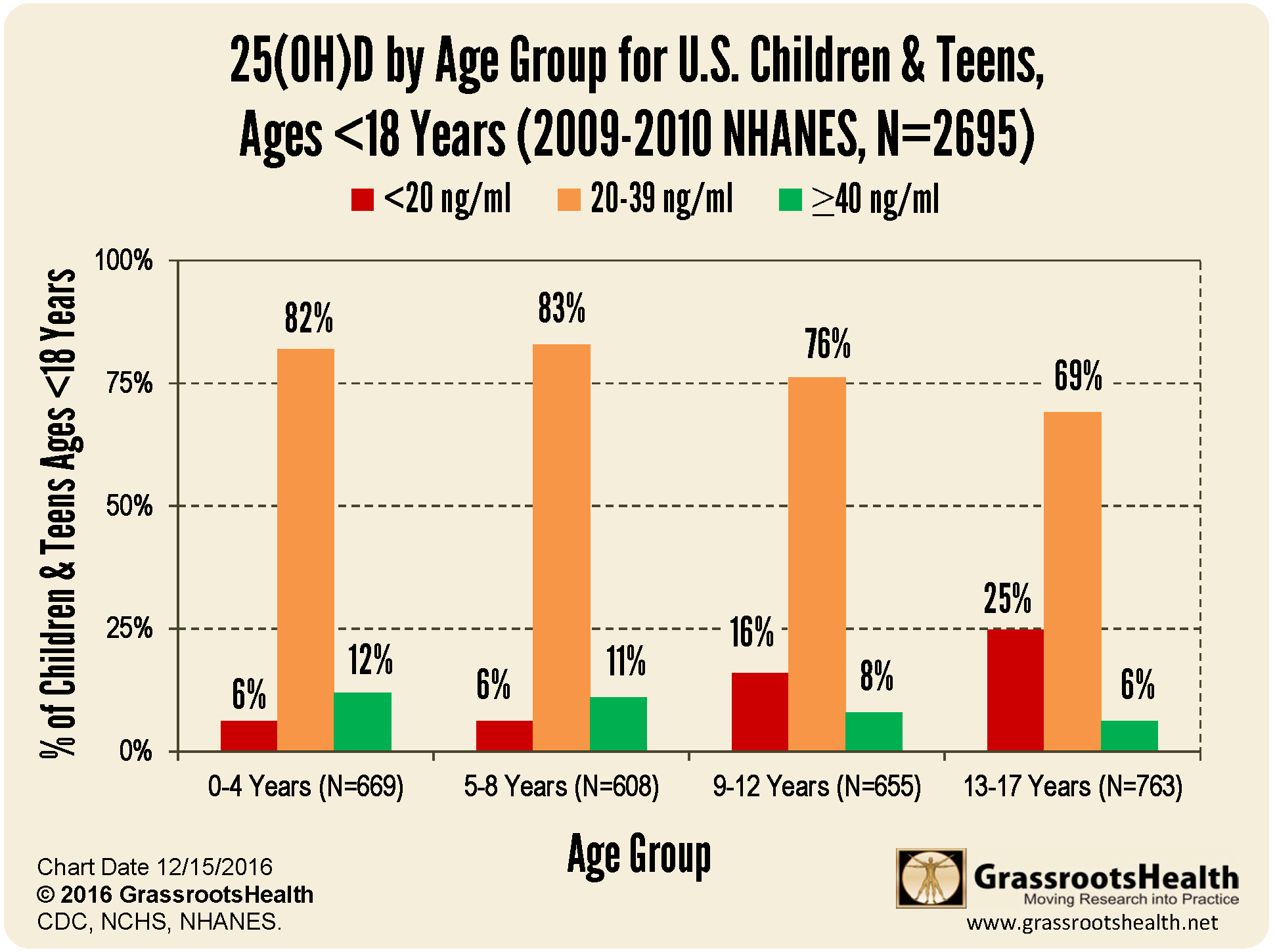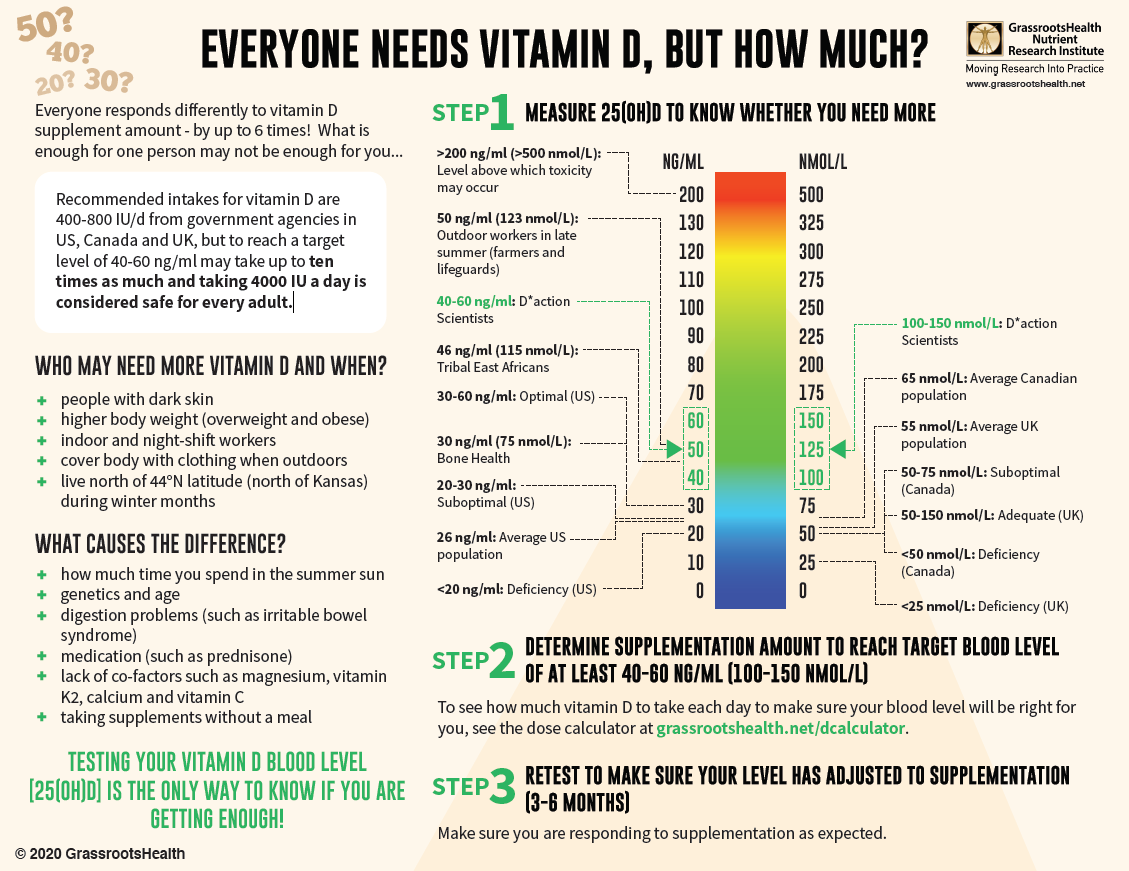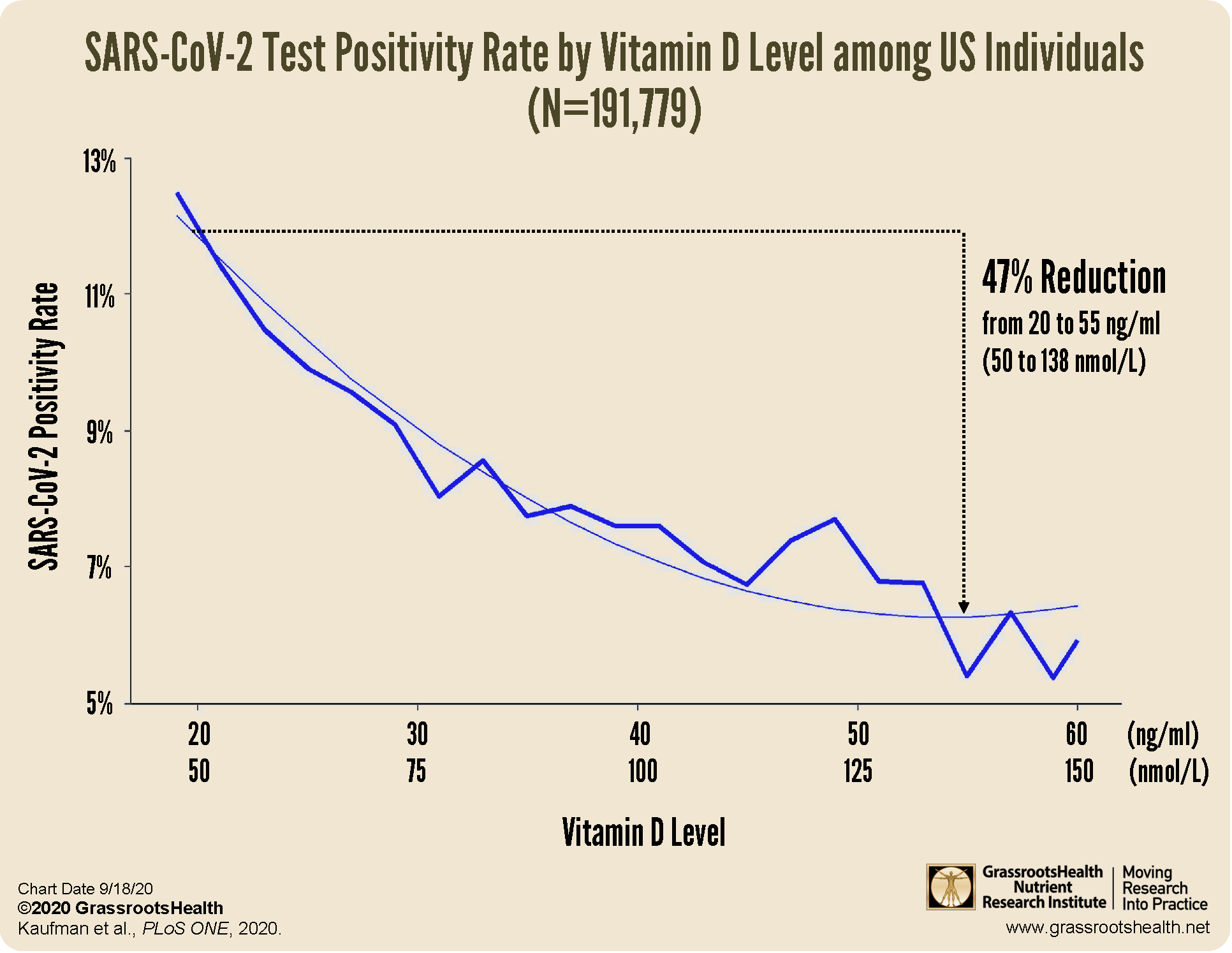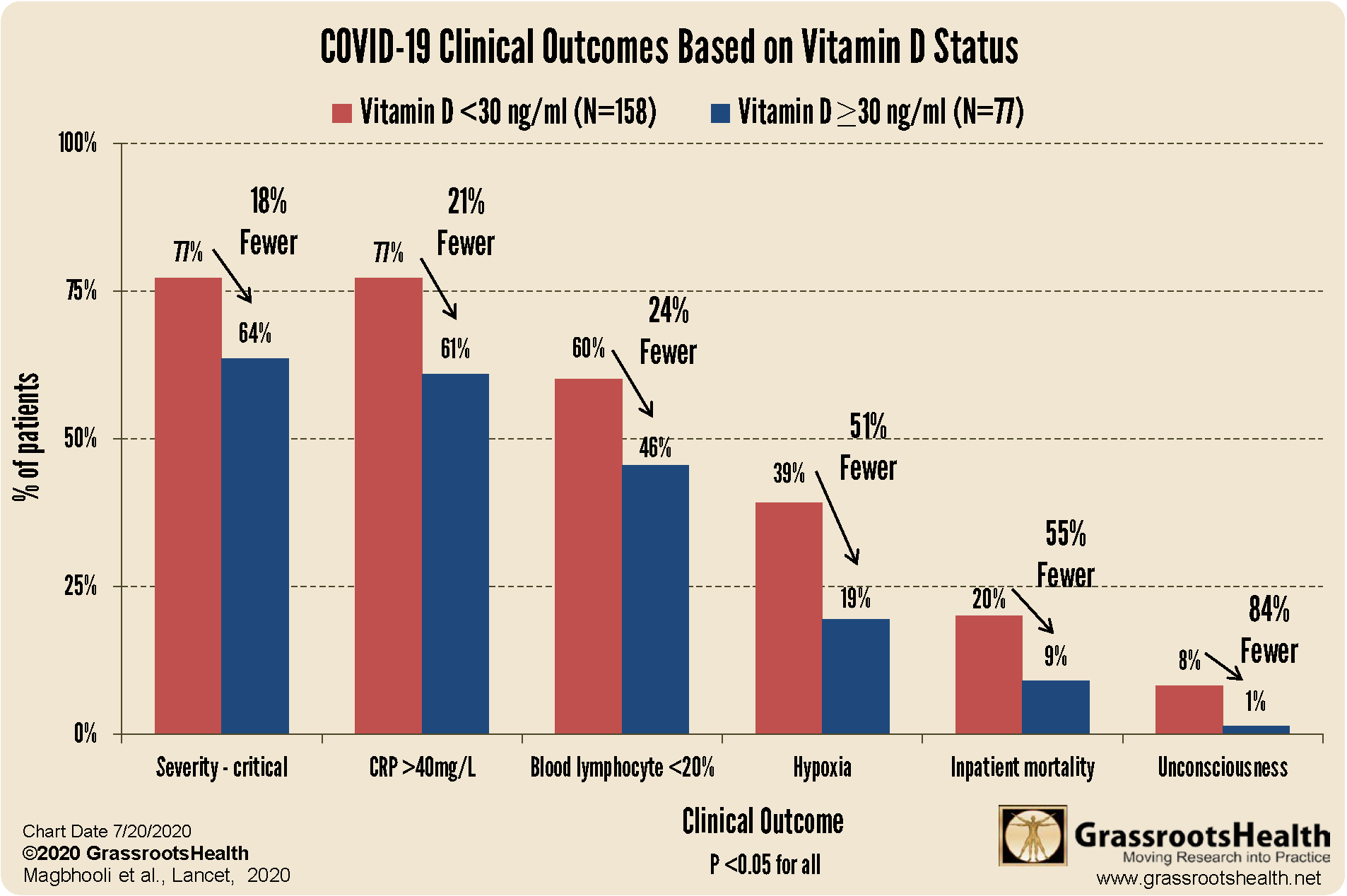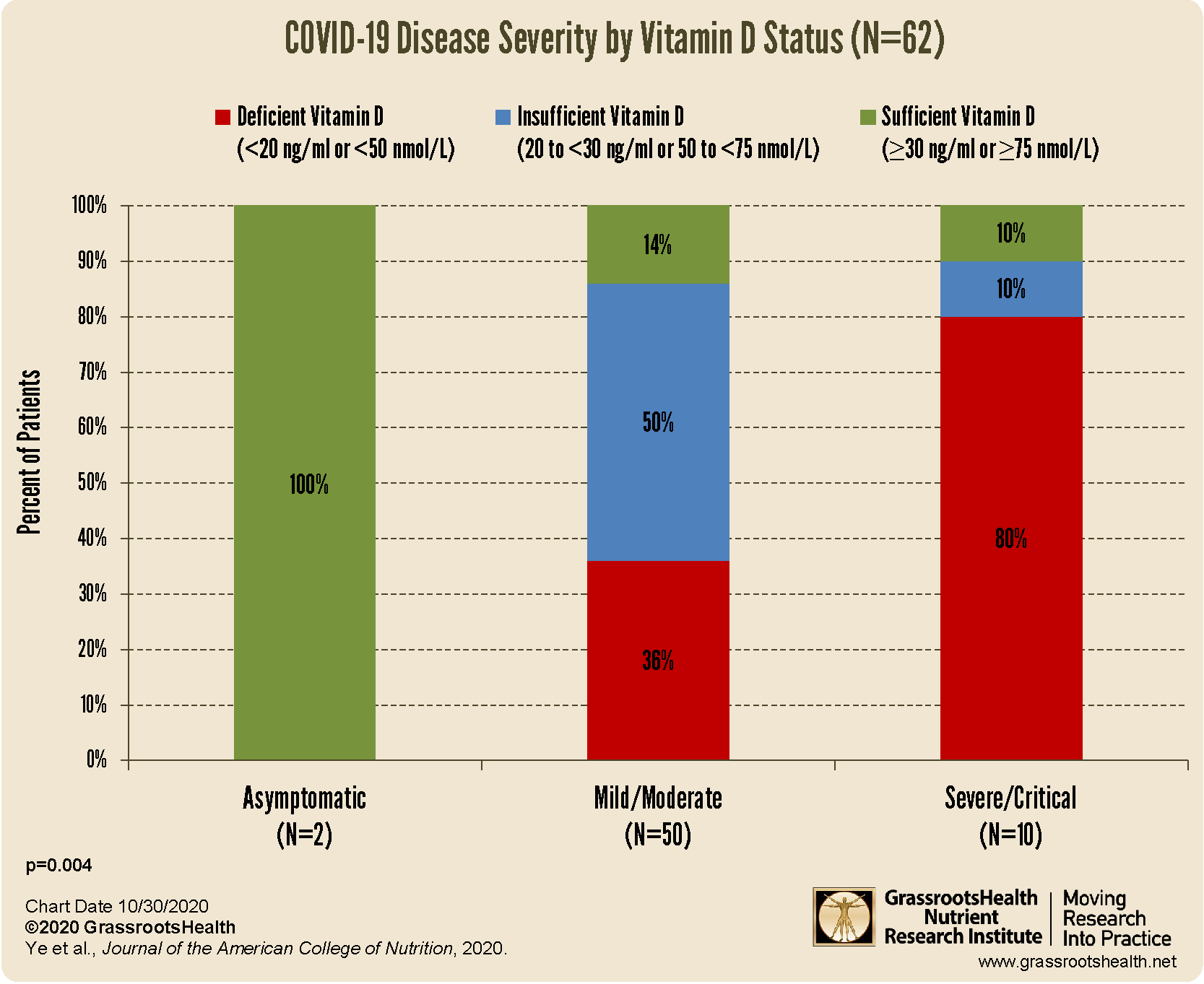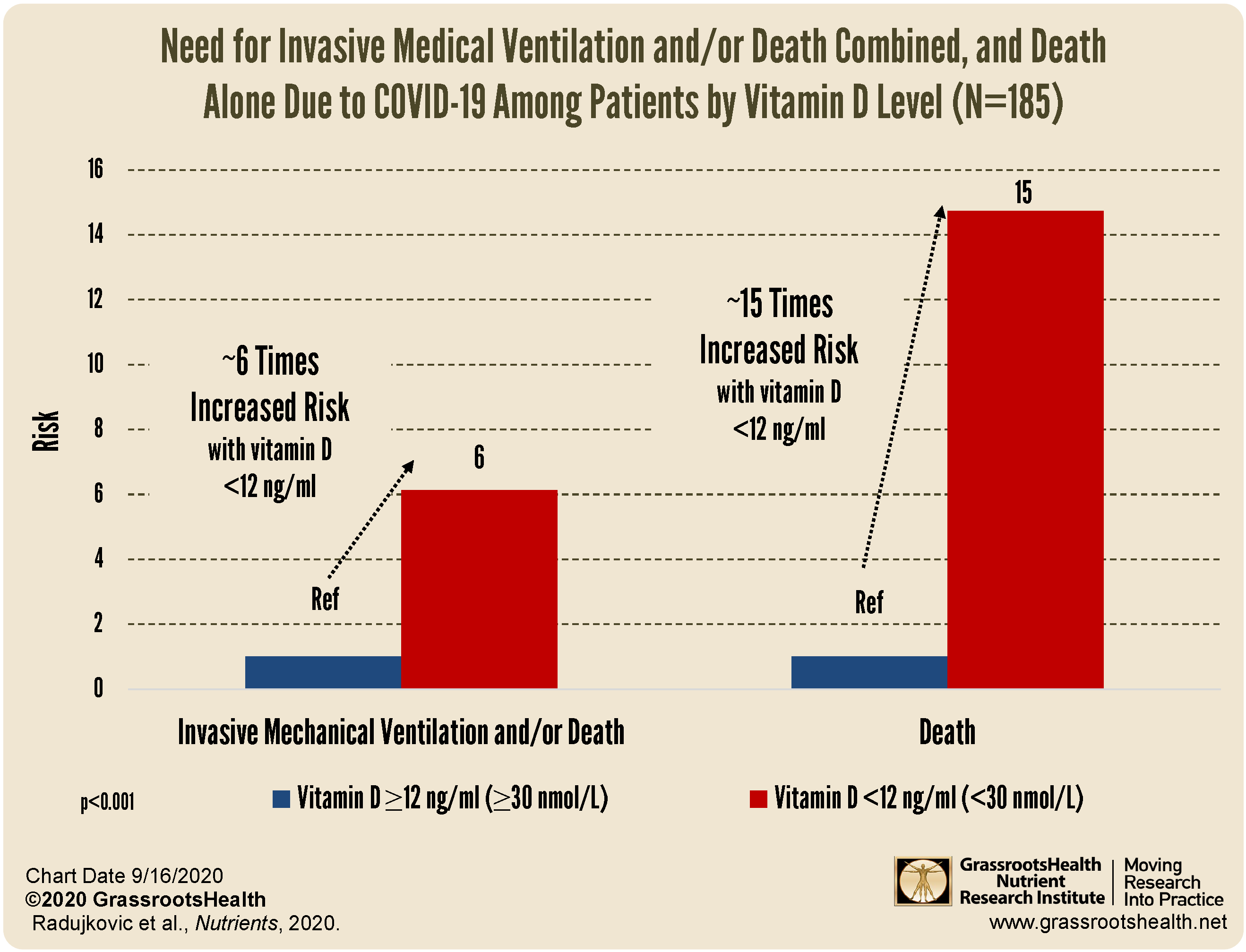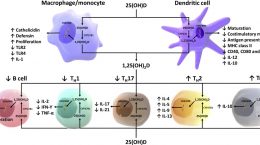Published on April 26, 2021
Researchers find possible connection between vitamin D levels and the prevalence and severity of MIS-C
 Many studies have been published showing an association between low vitamin D levels and increased risk and severity of COVID-19 disease among adults. Some studies among vitamin D deficient COVID-19 patients have also shown improvement in symptoms and survival rates with vitamin D supplementation, indicating that replenishing vitamin D is helpful for improving COVID-19 disease outcome. Current available data suggests that avoiding or correcting vitamin D deficiency at any point during the COVID-19 pandemic may improve outcomes overall. This all makes sense, considering the role vitamin D plays in immune health, including modulating immune function and inflammation directly within the lungs.
Many studies have been published showing an association between low vitamin D levels and increased risk and severity of COVID-19 disease among adults. Some studies among vitamin D deficient COVID-19 patients have also shown improvement in symptoms and survival rates with vitamin D supplementation, indicating that replenishing vitamin D is helpful for improving COVID-19 disease outcome. Current available data suggests that avoiding or correcting vitamin D deficiency at any point during the COVID-19 pandemic may improve outcomes overall. This all makes sense, considering the role vitamin D plays in immune health, including modulating immune function and inflammation directly within the lungs.
Unfortunately, not many studies have been published on vitamin D and children with COVID-19. Yet evidence to date suggests that vitamin D plays a role in the immune response in children as well. One previously reviewed study found increased COVID-19 disease severity among children with lower vitamin D levels. In fact, among those with a vitamin D level below 20 ng/ml (50 nmol/L), 31% of the children had moderate to severe COVID-19 symptoms, compared to only 18% with moderate symptoms (none classified as severe) for those children with vitamin D levels of 20 ng/ml or higher. Additionally, 46% of the children with higher vitamin D levels were asymptomatic, compared to only 10% of those with lower vitamin D levels. However, this particular study did not consider the effects of vitamin D on Multisystem Inflammatory Syndrome in Children.
What is Multisystem Inflammatory Syndrome in Children?
Multisystem Inflammatory Syndrome in Children (MIS-C) is a rare condition experienced by children who have been infected with the SARS-CoV-2 virus. It can be experienced by children who may or may not have had any other symptoms related to their COVID-19 infection. Symptoms are life-threatening, usually appear 3 to 4 weeks after initial infection, and include fever, abdominal symptoms, conjunctivitis, and a rash. Symptoms are thought to be due to a systemic hyperinflammatory response to the virus, with increased disease severity directly related to the greater hyperinflammatory response. Think of it as similar to the cytokine storm causing acute respiratory distress syndrome (ARDS) in adults.
Could Vitamin D Deficiency be a Risk Factor for MIS-C?
A review by Feketea et al. concludes that raising vitamin D levels could be effective in reducing the severity of MIS-C, as has been observed with another similar syndrome resulting from an excessive immune response to infection, Kawasaki disease.
In the diagram above, the authors illustrate just a few of the roles of vitamin D within the immune system during its response to a viral infection. The immune system relies on having a supply of vitamin D for specific needs, including increasing anti-inflammatory compounds and decreasing pro-inflammatory compounds – which is how it is able to reduce the severity of certain inflammatory reactions and decrease chances of cytokine storm. However, when vitamin D levels are low they are directed toward maintaining calcium balance and the immune system is left without.
Vitamin D is a potent regulator of both cell-mediated (T cell) and humoral (B cell) immunity. This is a vital part of the body’s defense against pathogenic invaders, allowing white blood cells to recognize, bind to, and destroy pathogens – a process that relies on vitamin D to function properly. Vitamin D is also needed for the production antibacterial and antiviral proteins (cathelicidin and defensins) and plays a role in phagocyte function (including monocytes, macrophages and dendritic cells).
It should be clear with the list above that the immune system needs a consistent supply of vitamin D in order to carry out these functions properly and effectively. Therefore, whether vitamin D deficiency may lead to or be a result of a hyperinflammatory immune response (because it is used up much more quickly than during a normal, healthy state), the authors of this review suggest measuring vitamin D levels at diagnosis and during the course of MIS-C in order to help monitor disease progression, and taking steps to correct any existing deficiency. The GrassrootsHealth scientists’ panel recommends ensuring adequate vitamin D levels of 40-60 ng/ml (100-150 nmol/L) year-round for everyone.
The Importance of Vitamin D Testing Increases as Our Children Grow
As children grow, and as they start to take on the responsibility of taking their own supplements, it is important to make sure their vitamin D intake is enough to accommodate their growth and daily health. We cannot know unless we test regularly!
A previous analysis looked at the National Health and Nutrition Examination Survey (NHANES) 2009-2010 data set for vitamin D trends among children (ages <18) with an overall break-down of vitamin D status by age group. There was a clear decline in vitamin D levels as children age, with the highest prevalence of deficiency among older teenagers – a 4-fold increase in the proportion of children below 20 ng/ml (50 nmol/L) from ages 0-4 years up to ages 13-17 years old.
As illustrated in the chart above, as age increases:
- There is a decline in vitamin D levels, especially in children 9 years and above
- There is a 50% decline in the proportion with levels at or above 40 ng/ml, from 12% for ages 0-4 years, to 6% for ages 13-17 years
- There is a 4-fold increase in the proportion with levels below 20 ng/ml, from 6% for ages 0-4 years, to 25% for ages 13-17 years!
Check Your Children’s and Your Own Vitamin D Levels
With almost 90% of the general population having vitamin D levels below the recommended 40-60 ng/ml (100-150 nmol/L), it is obvious that most people need more vitamin D. While most of us cannot achieve a vitamin D level of 40-60 ng/ml from sun alone, either due to our lifestyle, where we live, or other circumstances, we can certainly reach those levels with the right amount of supplementation.
Below is a guide for how much you might need, and who may need more. Your levels can be tested safely at home – order your home test kit today.
By joining the GrassrootsHealth projects, you are not only contributing valuable information to our study, but you are also gaining knowledge about how you could improve your own health through measuring and tracking your nutrient status, and educating yourself on how to improve it. Do you know what your status of vitamin D, omega-3s, and other essential nutrients is? Could your levels be improved? Test now to find out!
 We now have a NEW GIFTING SERVICE that allows you to quickly send ‘Gift Cards’ to friends, family and coworkers who you consider might need immediate access to testing, and to Claim the Joy of Your Health TODAY. Give the gift today!
We now have a NEW GIFTING SERVICE that allows you to quickly send ‘Gift Cards’ to friends, family and coworkers who you consider might need immediate access to testing, and to Claim the Joy of Your Health TODAY. Give the gift today!
What does the Research Say about Vitamin D & COVID-19?
It’s TIME to start saving lives! If you can help PREVENT the majority of the death, it’s time! What’s it costing you/us not to take action NOW?
There is much published research that supports a clear link between vitamin D and COVID-19 showing that higher vitamin D levels are related to:
a decreased risk of testing positive for COVID-19
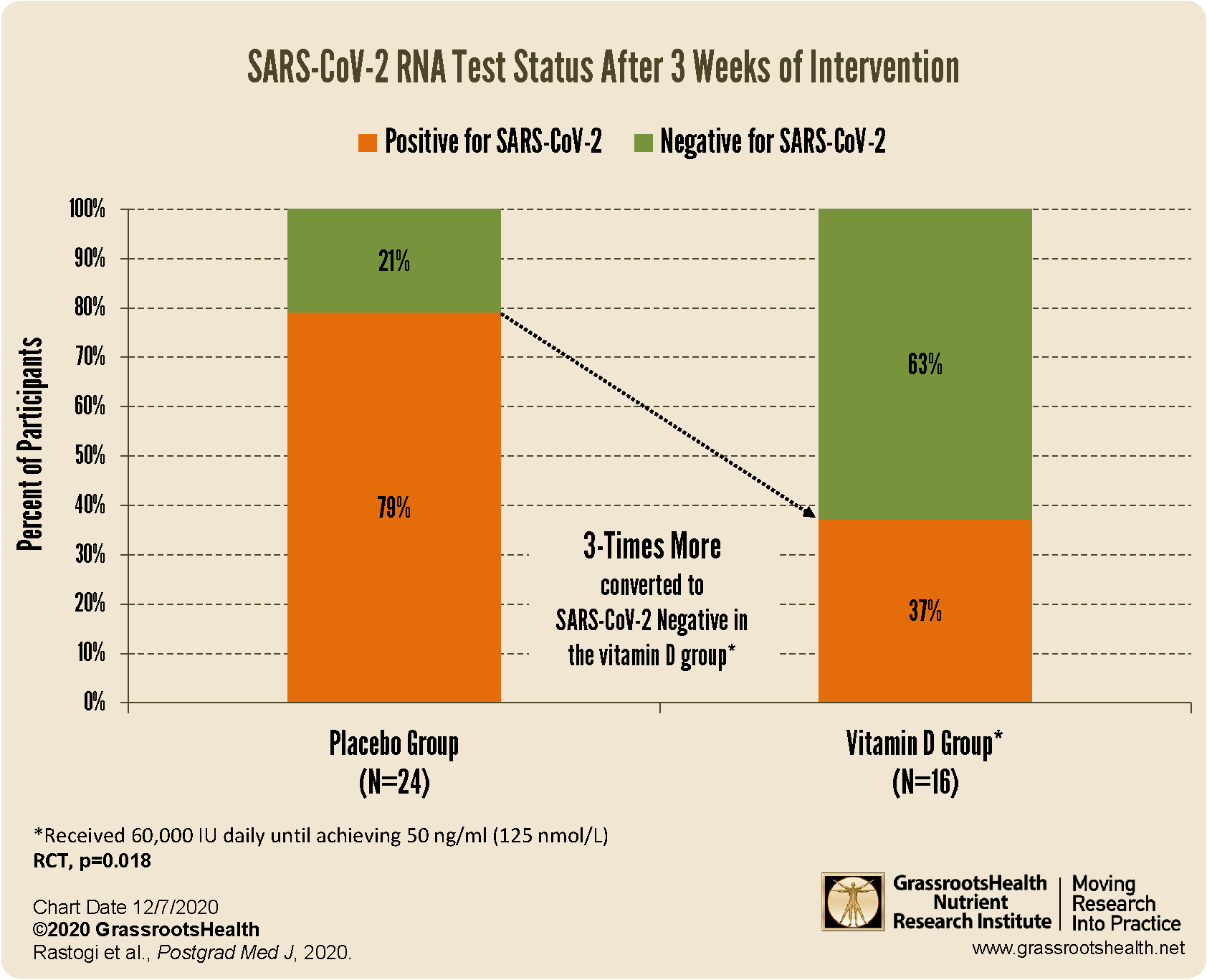 increased viral SARS-CoV-2 RNA clearance
increased viral SARS-CoV-2 RNA clearance
better clinical outcomes among patients with COVID-19
decreased risk of death due to COVID-19
Be sure to educate yourself on the benefits and importance of vitamin D for immune health, and take steps to ensure you and your loved ones are getting enough.
You can review all of the COVID-19 and immune health information we have shared on this page.


